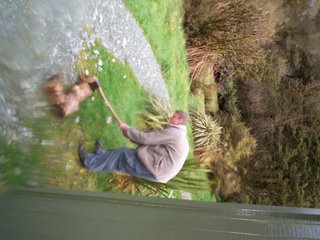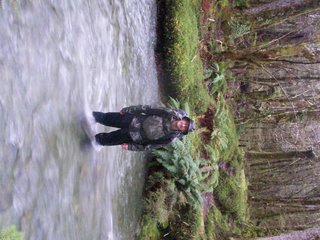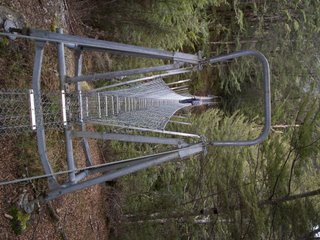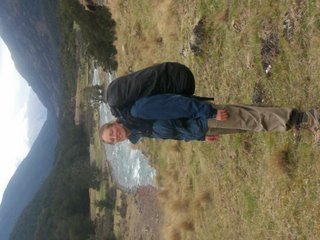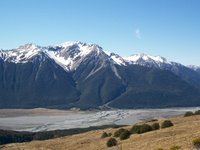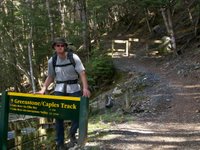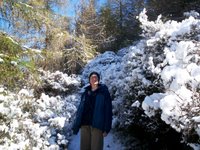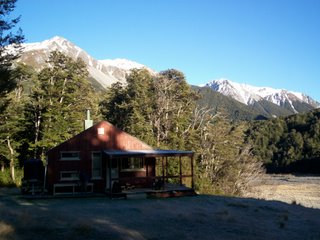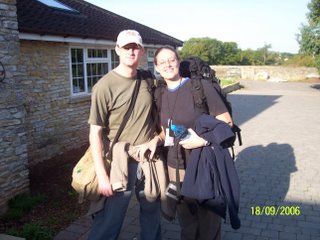Roots. After two weeks or so in Fiji this much we know. Fiji is all about roots. Eating roots, for starters. Whereas some might use rice or potatoes for a staple, the Fijians eat roots. Lots of them, cassava and taro in particular. Vitally, they drink roots aswell, for the tradition of kava drinking is fully alive and well, if somewhat foul tasting. One takes the roots of a type of pepper plant. Give them a bit of a scrape and then pound them to a powder in a giant sized pestle and mortar. The bigger the better. The usual arrangement is to load the roots into a foot high metal tube and then use a scaffolding pole to repeatedly crush the roots down. Mix the resulting dust with a some plain old water and, bula, you have a communal bowl of kava. A small half cocunut shell is filled with the brew and passed around a circle, to be gulped down in one go followed by a variety of handclapping routines. The kava is mildy narcotic, pretty unpleasant but undeniably rooty.
But most of all Fiji is about personal roots. The Fijians appear a little undecided about whether to remember their roots, apologise for them (especially when it comes to eating various folk over the generations), sell them for your tourist dollar or revel in the importance of the traditional vitues taught through the roots of the elders. The mix has been thoroughly stirred by the Indo-Fijian population, whose roots may once have been Asian but who know very much call this home. The easily unearthered racism between the indiginous and their Indian 'brothers' simmers in the hot hot sun. And curry. The uprooting of the 2000 coup is sure to be repeated. All of which is draped in the former roots of British Colonial rule, from the civil service beaurocracy to the little train lines that follow the major roads.
Our journey started in Nadi, and we basically conducted a clockwise tour of the main island in Fiji, Viti Levu, hopping over to Ovalau on the eastern side and then back round to Nadi, from where I write this post. Much of our time was spent in the interior of the Island rather on the more famous beaches of Fiji.
The fabulously picturesque village of Navala was a top spot to visit. Nestling in the high hills and mountains this village, vith a population of about 800 hardy souls, has the advantage of a chief with foresight and a sound planning mind. All of the buildings in the village are made from exclusively natural, local materials. This means the houses sit thatched of roof and bamboo sided along the bank of a beautiful river, with a steep side valley sweeping the perfectly orderly rows of houses up into the mountians. Manicured gardens of flowers and orchids sparkle all around. It is absurdly lovely to look at, a reminder of how things perhaps once were here, a welcome break from the corrogated iron constructs that no doubt keep the rain off more effectively. We stayed at the very nearby Bulou's lodge, with Bulou himself being a marvelously old and wise man, full of tribal stories from the old days and wise portents for the future. His man mountain of a son ran the place, the perfect gentle giant, striding around the simple lodge with logs on his shoulders to supply the traditional earthern fire oven dug effortlessly by him earlier. Mama Bulou sure cooks the roots up good when put, interestingly, back into the ground.
An architypal back breaking five hour bus journey took us though stunning scenery and heaving rain around the north of the island to, after a bus-boat-bus connection, the island of Ovalau, and to Levuka town. The old capital of Fiji, this sleepy seaside town moves in slow motion. The centre of colonial Fiji when the Brits moved in, here the buildings are all wooden slats and lazy shutters. The grandiose Royal Hotel, where we stayed, now creaks of times past. At least it would creek if it could be bothered. Which it can't. The airy conservatory and teak bar still seem to house moustacied men in panama hats and cotton suits, and the full size snooker table in the billiard room is a brilliantly British luxiory. If the staff were interested enough to knock the dust off it, the baise would no doubt still reek of the sugar, slave and spice trading that formally filled the conversation around its faded pockets. The Ovalau Club vies with the Levuka Club for punters, the latter being the Indian response to the former's exclusive membership. At least, it would so vie if either of them ever opened, the effect of which appeared to be far too much like hard work when we were there. It's a delighful bit of history of a town, a one road place that started slowing down in about 1870 and is now so close to a standstill it's hard to know whether time even passes here.
The somewhat miserable weather, hot and humid but rainy and blowing, failed to dampen our spirit for some beach time, so we zoomed across the choppy sea to little Calquai Island, a picture postcard perfect dot of a coral island. A fifteen minute stroll around the white beach fringe would circumnavigate the island, all palm trees and sea and sand. With enough sun to make it a tropical island getaway we settled well into our bamboo hut, right on the beach, shaded by palms, basic and simple accomodation answering any call for that idylic image for backpacking by the beach. Fabulous snorkling off the beach outside our hut allowed us a few lazy days, with the principal activities being a low tide walk out 200 meters along a sand bank to the tiny Snake Island, so named for it being home to numerous sea snakes. The reef drops away here to deeper water, allowing for sharks and rays and eels to inhabit the area. Fabulous. Also of interest was the floating pumice stone in the water, demonstrating the enormous power of an underground eruption that threatened to uproot the whole of Tonga a few weeks ago.
A comically wet boat ride transported us back to the 'mainland' and round through the capital Suva, along the Coral Coast and back round to Nadi. Fiji has proved a much different place to that expected. The brouchure images of perfect beach after perfect beach are certainly real enough, but the life away from the beach resorts is interesting and fun. The landscape is suprisingly rugged and verdant and spectacular, the local buses are super cheap and convenient and lots of fun to squeeze onto. Most of all, the Fijians are most excellent hosts. Blessedly free from hassle we have been welcomed at every turn, we have been sold nothing that we didn't want and have nosed about peacefully and freely. Outrageously but handily, Fijians are still taught English as their first language. A very fine stop on our route.
So now we are set for New Zealand, for some tramping and touring. And, no doubt, more rain.
